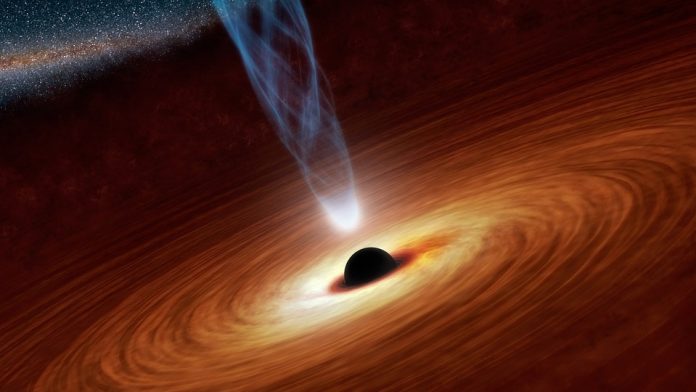
Nothing is more interesting than the death of a star–and the bigger, the better. When a dying star is about 2.8 times the mass of the Sun, the star submits its application for the Black Hole Intergalactic Club. It’s comforting to know our Sun cannot become a black hole because of its low mass so that we can study black holes from a safe distance. Black holes as a concept are frightening but harmless in our corner of space.
Scientists still know little about these gravitational points of interest, but they are actually responsible for many of the shapes we see in the universe, like galaxy formations. Watch the video below to see what scientists have gathered so far.
Key Term Definitions
Escape Velocity: The velocity needed to fling something off the surface of an object. In other words, the speed something needs to reach to escape the gravitational pull of an object without being sucked back in.
Event Horizon: The point in a black hole’s formation when the escape velocity is greater than the speed of light. Virtually nothing in the universe is faster than the speed of light, which means at this point, nothing can escape the black hole’s gravity. This is what makes the black hole black because not even light can escape. The Event Horizon forms when the dying star’s core condenses to about 18 kilometers across, which increases its gravitational pull immensely.
Speed of Light: 299,792 kilometers per second. That’s pretty quick! But not quick enough at the Event Horizon.
Space-time: A concept introduced by Einstein that suggests space is not just emptiness, but a fabric of space and time as a package deal. This means a massive object cannot warp space without warping time. Someone close to stronger gravity will experience time much slower than someone far away from that same gravity.
To Put it Simply
Black holes happen when a star with enough mass starts to die. If the dying star accumulates enough mass, it can skip exploding and start condensing infinitely. Once the star condenses to a certain size, a point exists where nothing can escape the gravitational pull. The light around the star cannot escape, making everything that passes the point of no return invisible to outsiders. Black holes don’t wander around the universe, sucking everything up in its path because the gravity is only strong relatively close to it–just don’t get too close.
Also, consider our article A NASA Engineer’s Advice for Winning School Science Fairs!



















